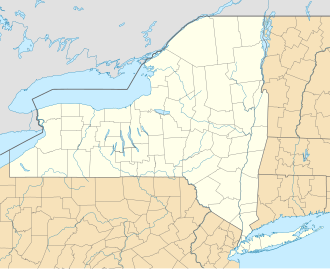Construction and opening
Following the completion of the original subway, there were plans to construct a line along Manhattan's east side north of 42nd Street. The original plan for what became the extension north of 42nd Street was to continue it south through Irving Place and into what is now the BMT Broadway Line at Ninth Street and Broadway. In July 1911, the IRT had withdrawn from the talks, and the Brooklyn Rapid Transit Company (BRT) was to operate on Lexington Avenue. The IRT submitted an offer for what became its portion of the Dual Contracts on February 27, 1912. [6] [7] As workers were blasting through the rock to excavate the tunnel, in March 1912, part of the roadway caved into the excavation site at 87th Street. [8]
In 1913, as part of the Dual Contracts, which were signed on March 19, 1913, [9] the Public Service Commission planned to split the original Interborough Rapid Transit Company (IRT) system from looking like a "Z" system (as seen on a map) to an H-shaped system. The original system would be split into three segments: two north–south lines, carrying through trains over the Lexington Avenue and Broadway–Seventh Avenue Lines, and a west–east shuttle under 42nd Street. This would form a roughly H-shaped system. [10] [11] It was predicted that the subway extension would lead to the growth of the Upper East Side and the Bronx. [12] [13]
The 86th Street station opened on July 17, 1918, with service initially running between Grand Central–42nd Street and 167th Street via the line's local tracks. [3] [14] On August 1, the "H system" was put into place, with through service beginning on the new east and west side trunk lines, and the institution of the 42nd Street Shuttle along the old connection between the sides. The station's lower level opened on this date with the inauguration of express service. [15] [16] The cost of the extension from Grand Central was $58 million. [17]
Station renovations
The city government took over the IRT's operations on June 12, 1940. [18] [19] In late 1959, contracts were awarded to extend the platforms at Bowling Green, Wall Street, Fulton Street, Canal Street, Spring Street, Bleecker Street, Astor Place, Grand Central, 86th Street and 125th Street to 525 feet (160 m) to accommodate ten-car trains. [20]
In 1970, with the construction of a Gimbels department store directly above, Gimbels agreed to renovate the station's entrances. [21] For over a year, community members had asked Gimbels to include an entrance into the store's basement from the subway. [22] While the renovation took place mostly in the fare control areas, work was also done to fix the station's lighting, walls, floors, turnstiles, stairways, and token booths. The Gimbels store opened in 1972. [23] The renovation project cost $405,000. [24]
In 1983, the MTA added funding for a renovation of the 86th Street station to its 1980–1984 capital plan. [25] The station was renovated again in 1986 as part of a move to prevent the existing New York City Subway stations from falling apart after years of deferred maintenance. This was evidenced by the addition of the then standard orange platform edge in addition to the yellow platform edge that was originally there. The I-beams were painted red instead of the original blue and the other parts of the station were fixed. [26]
This station was renovated in 2003, along with the 77th Street and 116th Street stations on the Lexington Avenue Line. As part of the project, structural deficiencies were repaired, signage and lighting were enhanced, electrical service was upgraded, station facilities were rehabilitated, new fare arrays and a new token booth were installed, and portions of the station were upgraded to be compliant with the Americans with Disabilities Act of 1990. In addition, visual clutter was eliminated, and artwork was installed. The contract for the station renovation project, which was expected to take two year, was expected to be advertised in October 2000. [27] The contract for these three stations was awarded in October 2001, and the projects were done in-house. The cost of the work at 86th Street station was $27.3 million, of which $20.3 million came from the Federal government. [28]
In fall 2004, the station renovation project was completed. [29] It consisted of repainting the I-beams from red to dark blue, as well as the removal of train arrival devices on the upper level that gave notices of approaching express trains on the lower level, among other things; the latter was replaced with countdown clocks, on both levels, which performed the same function. [30] [31] This station was added to the National Register of Historic Places on March 30, 2005. [32]
An ADA-accessible elevator to the northbound local platform was added in the 2010s. The rest of the station remained inaccessible, since there was no elevator from the local platform to the express platform and no elevators on the southbound side. [33] [34] Accessibility of the entire station was proposed in August 2019 as part of the MTA's "Fast Forward" program. [35]
A request for proposals was put out on May 18, 2023 for the contract for a project bundle to make 13 stations accessible, including completing work at 86th Street. [36] The contract for three additional elevators was awarded that December. [37]







